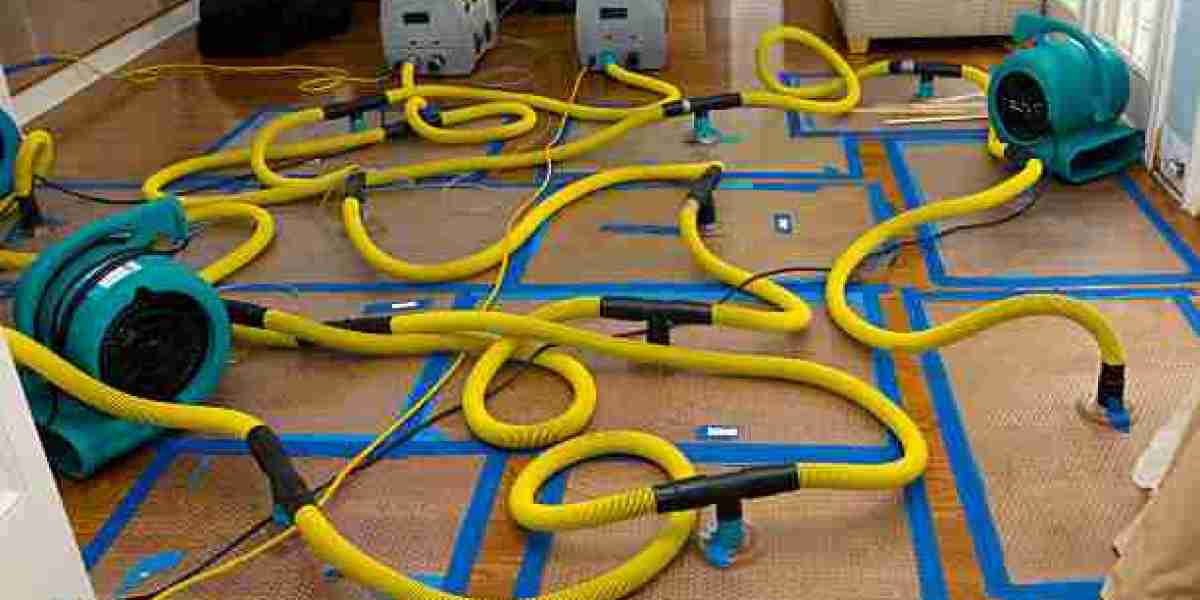Your home in Clear Lake Shores, TX is more than a building—it’s your sanctuary. But when water damage strikes, that sanctity can vanish overnight. Whether it’s a sudden pipe burst, heavy storm, or hidden leak, water issues can cause costly structural damage, mold growth, and loss of personal belongings. The good news is: many water emergencies can be prevented with the right strategies and preparation.
In this guide, we’ll walk through actionable steps to protect your home from future water damage, explain when to call professionals, and show how the right restoration partner can safeguard your property and peace of mind.
Understanding the Risks in Clear Lake Shores, TX
Clear Lake Shores sits in a region where heavy rainfall, storms, and occasional flooding are real threats. Some common water damage causes in this area include:
Roof leaks during hurricanes or tropical storms
Overflowing gutters or clogged downspouts
Foundation cracks are letting groundwater seep in
Burst or leaking pipes — especially in older plumbing systems
Sewage backflow during heavy rain
Water intrusion from windows, doors, or poorly sealed joints
Because of this, homeowners should adopt a proactive mindset. Aim to prevent water damage rather than only reacting after a flood.
1. Inspect and Maintain Your Roof & Gutters Regularly
Your roof is the first line of defense against rain and storm damage. A seemingly small leak can lead to catastrophic damage if ignored.
Check shingles and flashing. Replace broken or missing shingles, and ensure flashing around chimneys, vents, and skylights is secure.
Clean gutters and downspouts. Debris can clog your gutters, causing water to pool and overflow onto walls or into the foundation.
Ensure proper drainage. Downspouts should direct water at least 5‑10 feet away from your foundation to prevent seepage.
By doing these inspections seasonally (especially before storm season), you reduce the chance of water sneaking in from overhead.
2. Seal Openings, Cracks, and Foundation Gaps
Water can infiltrate your home through the smallest of cracks. Here’s what to look for:
Gaps in window frames or doors
Cracks in the foundation or basement walls
Openings around plumbing or electrical penetrations
Worn caulk or sealant around exterior joints
Use high-quality waterproof caulking or sealants to close these vulnerabilities. In homes around Clear Lake Shores, TX, especially those with basements or crawl spaces, you might also apply a waterproof coating or membrane to foundation walls where groundwater pressure is a concern due to the area's high humidity and occasional flooding.
3. Install Sump Pumps and Backflow Valves
For homes in areas prone to flooding or sitting over a high water table, mechanical solutions can make a big difference.
Sump pumps automatically remove accumulating water from basements or crawlspaces.
Backflow valves or check valves prevent sewage from flowing backward into your home when sewer systems are overwhelmed.
Ensure your sump pump has a battery backup so it works even during power outages. Test it regularly to confirm proper operation.
4. Keep Plumbing in Top Condition
One of the most frequent causes of residential water removal calls is burst or leaking pipes. Protect your plumbing by:
Inspecting for corrosion, rust, or leaks around joints
Monitoring water pressure—high pressure can stress pipes
Replacing old hoses
Insulating exposed pipes, especially in colder areas
Flushing water heaters to remove sediment that can cause damage
Once a year, consider hiring a plumber for a check-up to catch issues before they escalate.
5. Use Smart Leak Sensors & Monitoring Systems
Technology is your ally. Water damage restoration often gets easier when problems are caught early. Install smart sensors in high-risk areas:
Under sinks and appliances
Behind water heaters
Around sump pump basins
Near the washing machines
Many sensors connect to apps on your phone and send alerts when moisture is detected. This lets you respond immediately before water spreads.
6. Design Landscaping for Better Drainage
Your yard plays a big role in preventing water intrusion. Some landscaping tactics that help:
Grade the soil so it slopes away from your foundation
Install French drains or gravel trenches in low spots
Use rain gardens or absorbent plants in areas where water tends to pool
Avoid planting large vegetation right next to your foundation—roots can crack or damage structures
These measures keep water flowing away from your home rather than toward it.
When to Call a Professional Water Extraction Company
Even with every precaution, emergencies happen. When water intrusion is large-scale—flooding, major leaks, or sewage backup—you’ll need a reliable water extraction company. They provide:
Immediate 24/7 emergency response
High-powered pumps and vacuums
Industrial drying and dehumidification
Mold remediation and air purification
Structural drying and restoration
In Clear Lake Shores, TX, having a trusted local partner for water damage restoration ensures minimal downtime and damage. A professional can handle both residential and commercial cases, depending on your property type.
Residential vs. Commercial Water Protection Strategies
Much of the prevention advice applies to both homes and businesses, but commercial properties often have specialized concerns:
Area | Residential Focus | Commercial Focus |
Contents | Furniture, flooring, personal items | Inventory, electronics, equipment |
Downtime | Comfort and safety | Business operations and revenue |
Infrastructure | Plumbing, roofing, drainage | Electrical systems, servers, HVAC |
Response | Fast local crew | Larger-scale restoration teams |
For businesses, plan backup protocols, elevate critical systems off the floor, and have contracts in place with commercial water removal specialists. That way you minimize losses and quickly resume operations.
Choosing the Right Local Experts
Fast response matters when water damage strikes. Choose local contractors familiar with Clear Lake Shores’ conditions and regulations. When searching for water extraction near me, look for firms that:
Offer 24/7 emergency services
Hold proper licensing and insurance
Use advanced drying and monitoring equipment
Provide transparent pricing and written contracts
Have positive reviews and proven experience
One experienced name in the area is Bulldog Restoration & Cleaning LLC, known for its timely and effective restoration work across residential and commercial properties.
Final Thoughts
Water can be devastating, but much of its damage is preventable. By proactively maintaining your roof, plumbing, landscaping, and protective systems, you fortify your home against future risks. Smart use of technology, regular inspections, and local partnerships with trusted restoration experts make a massive difference when emergencies occur.
Don’t wait until water is already inside. Take preventive steps now to preserve your home, protect your belongings, and live with confidence even when storms roll through Clear Lake Shores.
Frequently Asked Questions
1. How soon must water be removed to prevent serious damage?
Ideally within 24 to 48 hours. Delays increase the risk of mold and structural damage.
2. Does homeowners' insurance cover water damage?
It depends. Many policies cover sudden, accidental damage (like burst pipes) but exclude flood damage or gradual leaks. Always review your policy and consider flood insurance.
3. Can I dry out water damage myself?
Small spills? Yes. But for significant intrusion—walls, floors, ceilings—you’ll want professionals with specialized equipment to ensure full drying.
4. How often should I inspect my home for vulnerabilities?
At least twice a year, and after major storms. Areas to check include roofs, gutters, plumbing, and foundation for new cracks.






